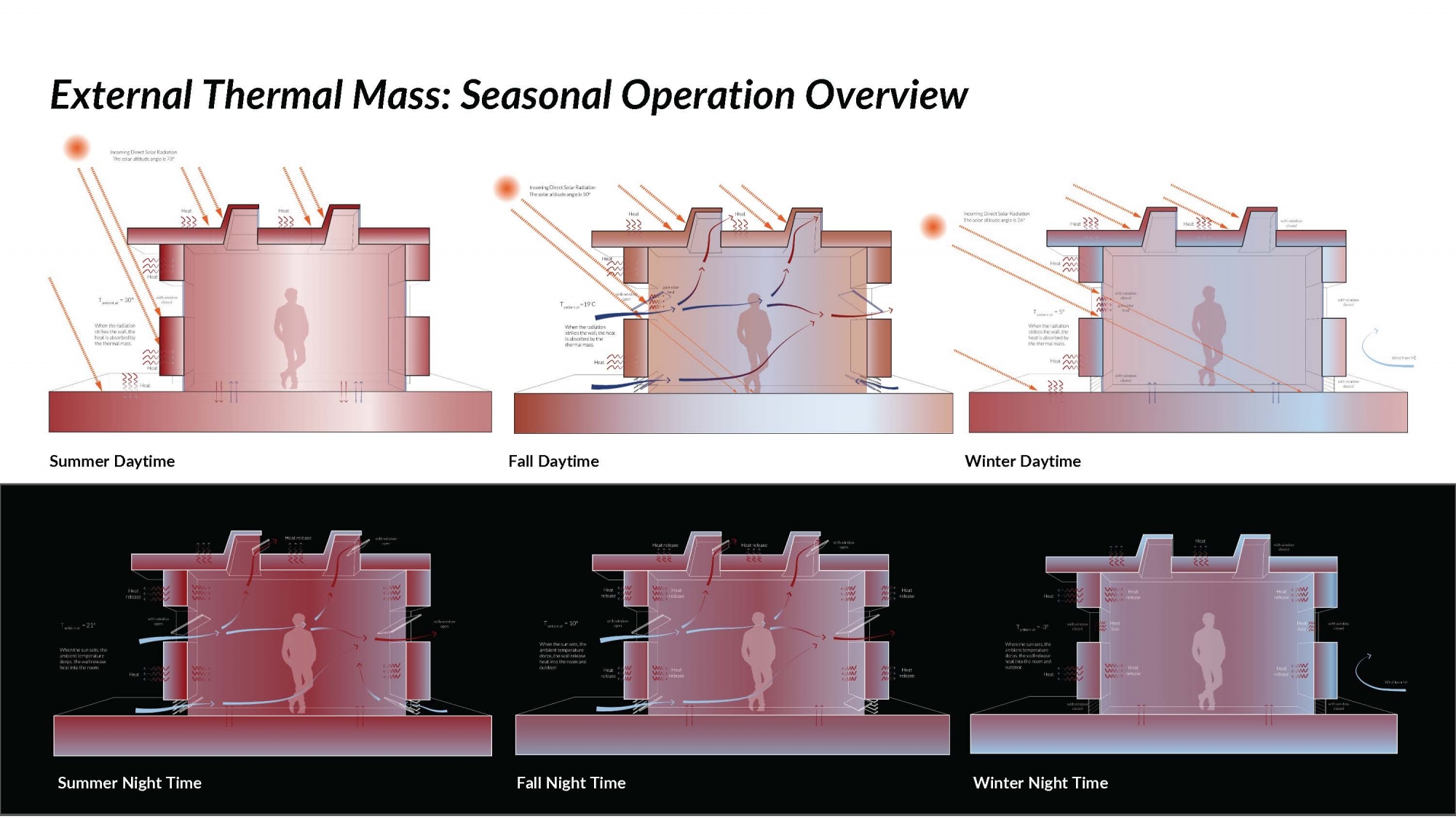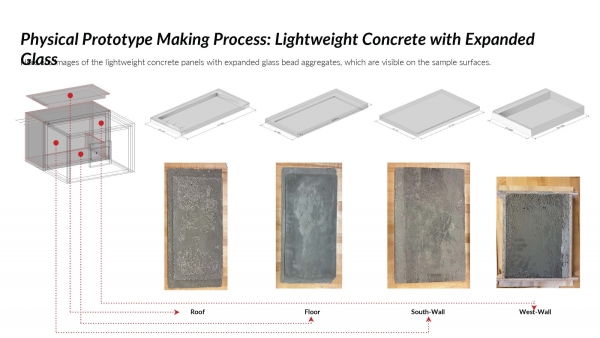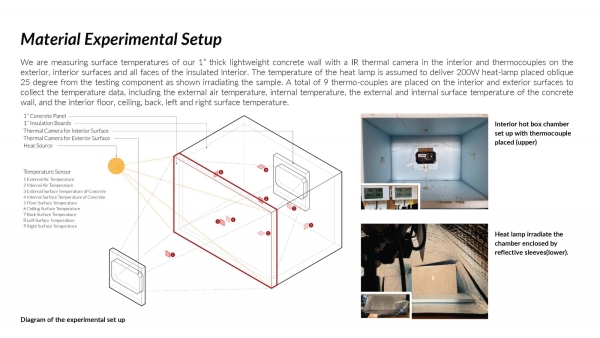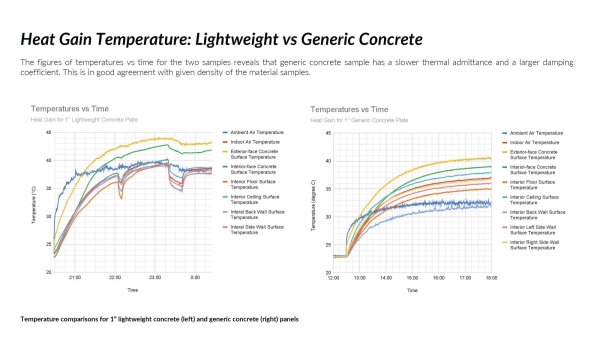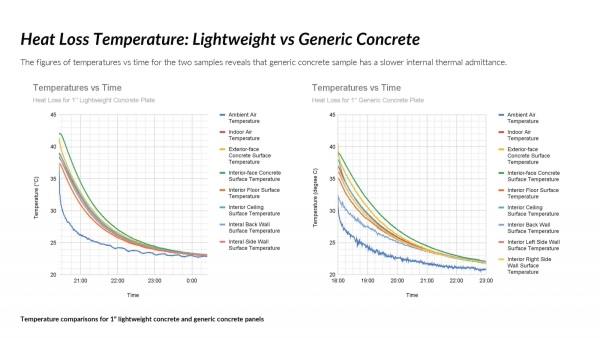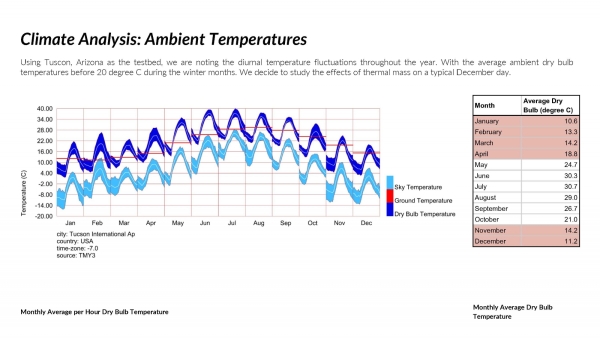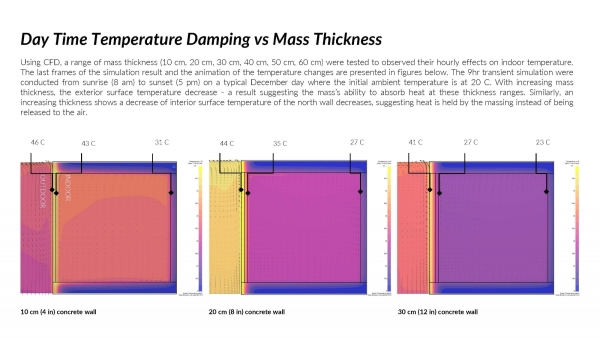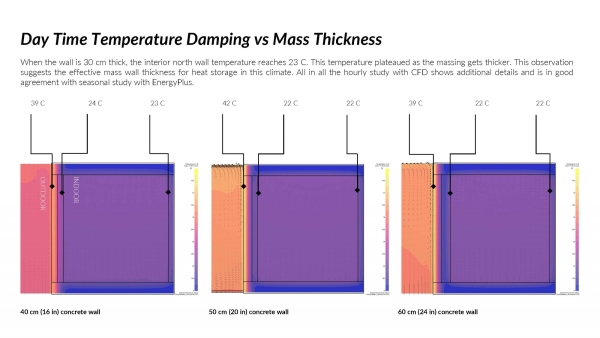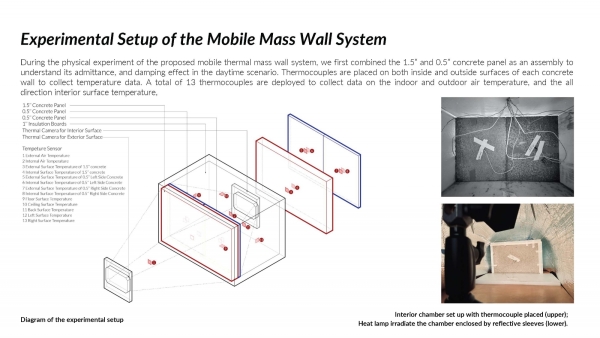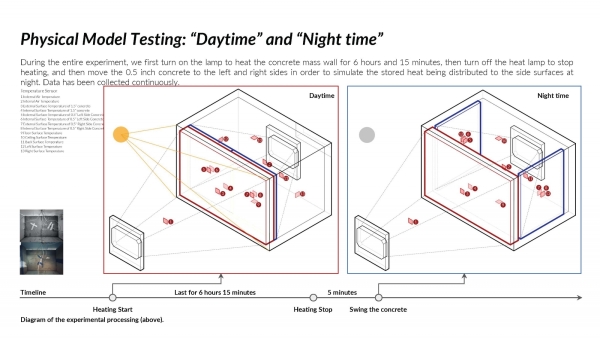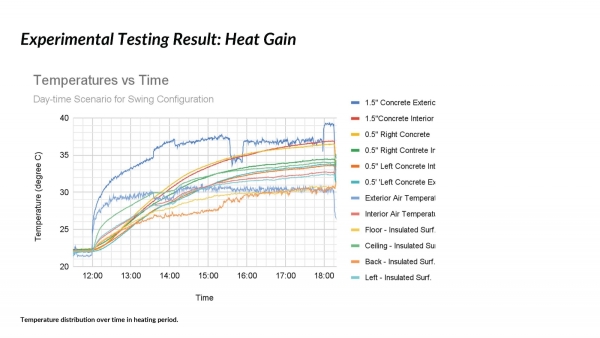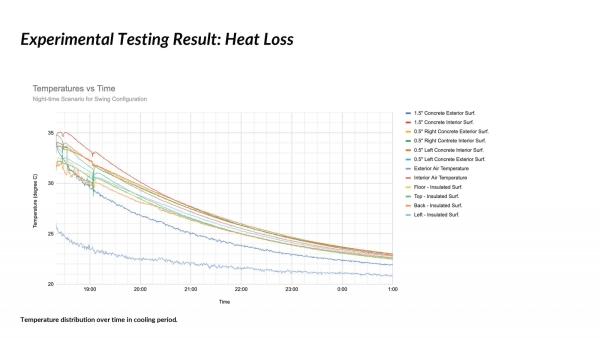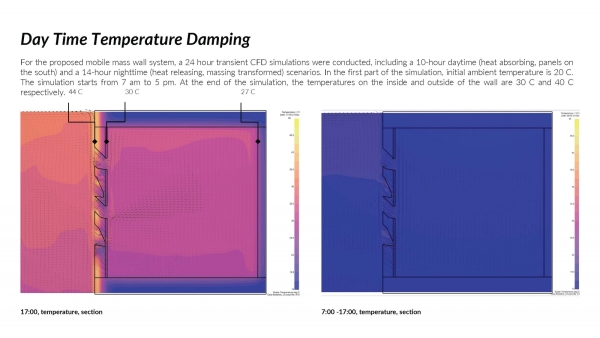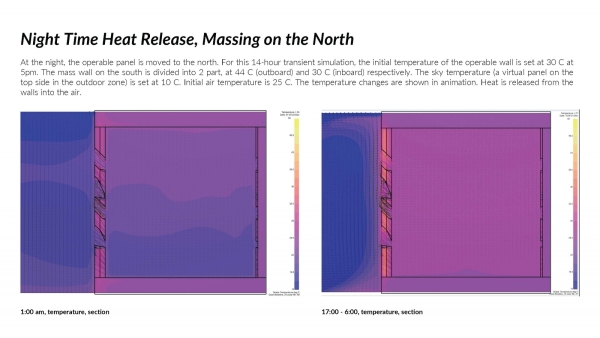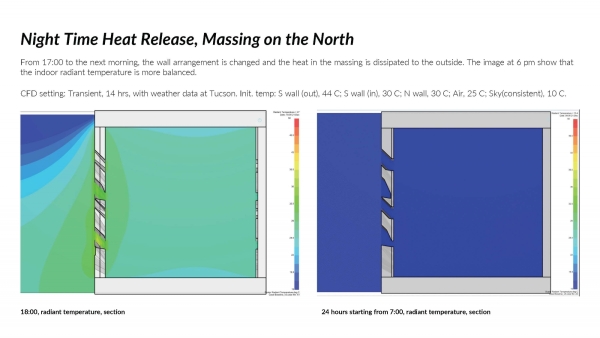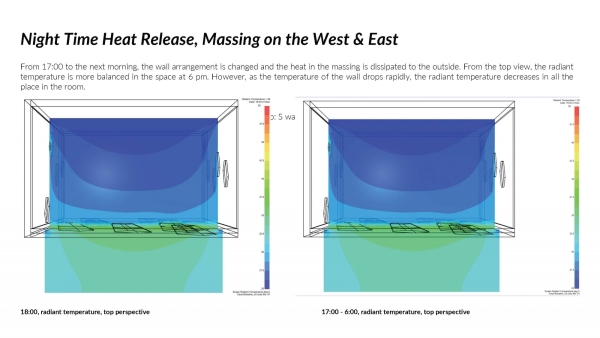Design with Critical Thermal Mass Thickness
- Jeiwei Li
- Zherui Wang
- Qi Zhang
Design with critical thermal mass thickness
Hypothesis and overarching goals:
A case study in the winter months of Tucson, Arizona testing mobile lightweight concrete walls
for a uniform nighttime indoor thermal gradient.
Thermal Mass describes the ability of building materials to absorb, store, and release heat, providing thermal inertia against temperature fluctuations. Thermal mass acts as heat sink in warm periods and as heat source during cool periods. By alternately storing and releasing heat, high thermal mass
materials can very effectively even out the daily indoor temperature extremes. Thermal mass can be further divided into external and internal masses. Broadly speaking, external thermal mass manifested as roof and exterior wall exposes directly to the ambient and indoor air.
For the proposed mobile mass wall system, a 24 hour transient CFD simulations were conducted, including a 10-hour daytime (heat absorbing, panels on the south) and a 14-hour nighttime (heat releasing, massing transformed) scenarios. In the first part of the simulation, initial ambient temperature is 20 C. The simulation starts from 7 am to 5 pm. At the end of the simulation, the temperatures on the inside and outside of the wall are 30 C and 40 C respectively.

